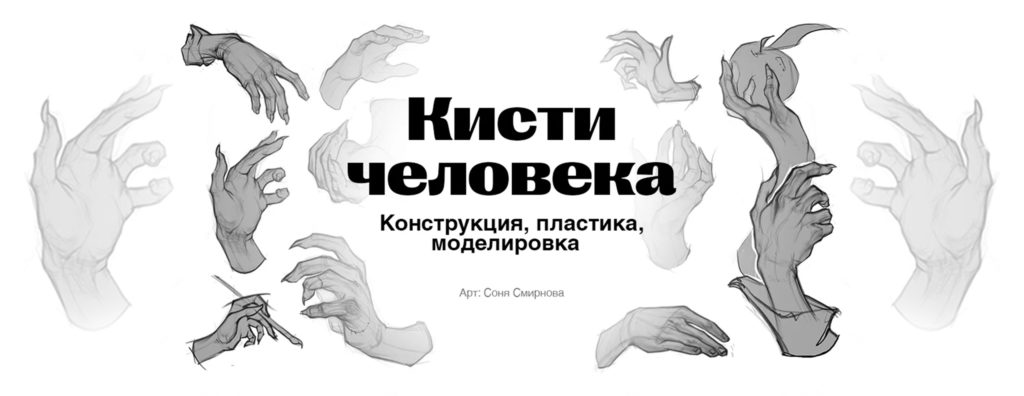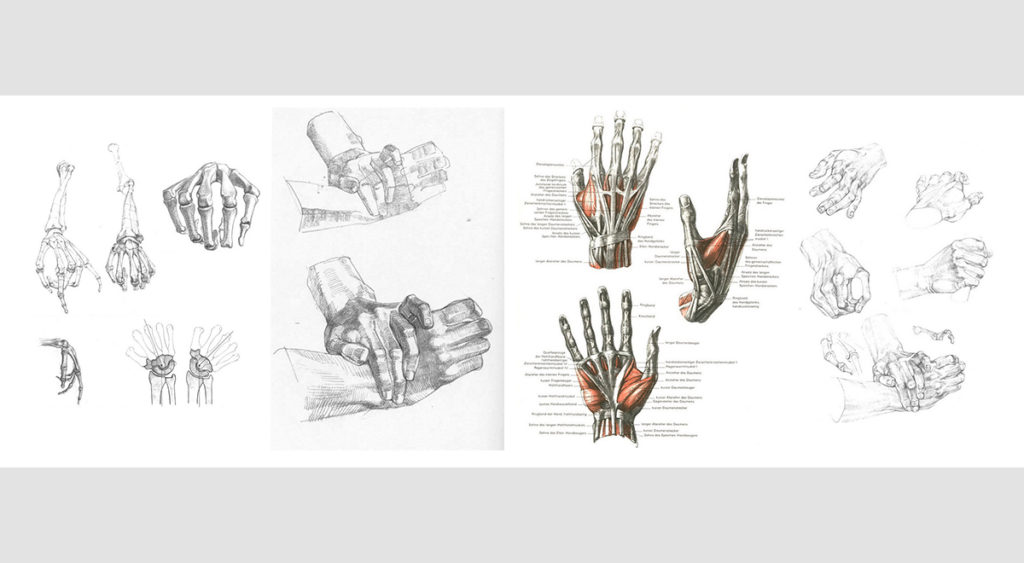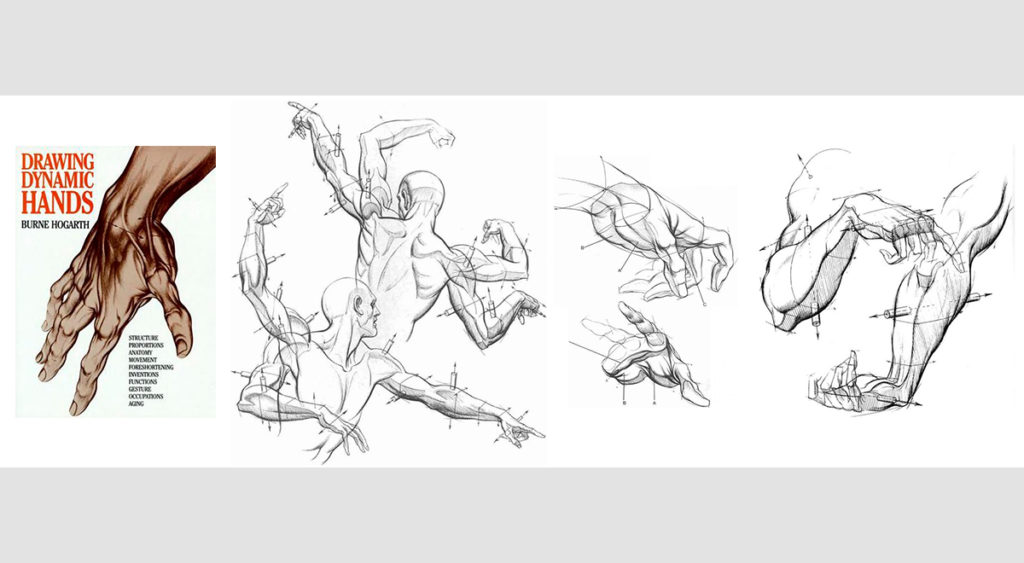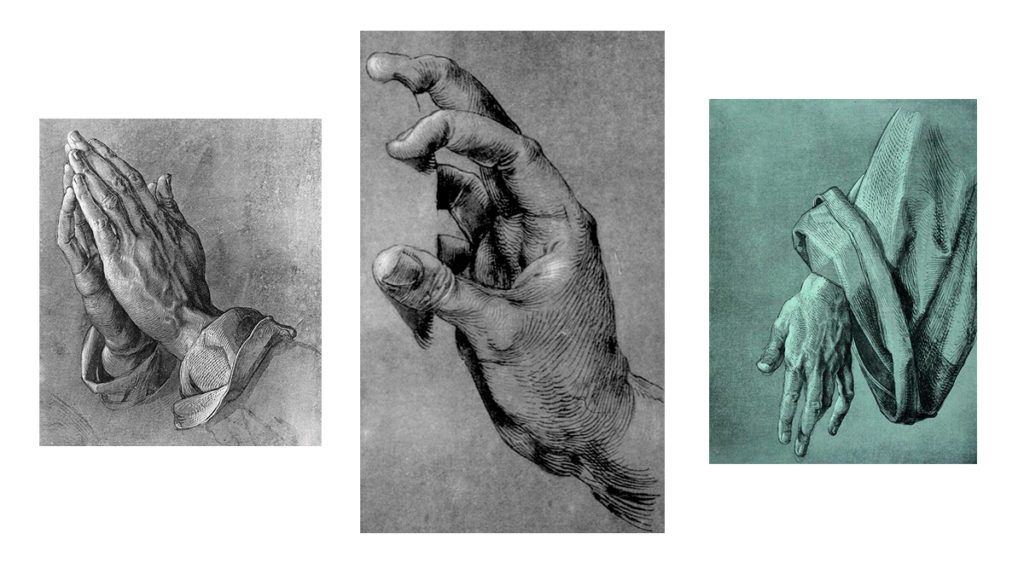
We open a series of articles about painting human brushes. Brushes are one of the most difficult topics in figure study, they are very plastic and reflect an emotional state.
If you want to learn cool brush painting, come on over
to
the Human Brushes course
at Skills Up School. Or read the first part of the article – in it we’ve collected drawing references demonstrating the construction, plasticity and modeling of the hands.
And don’t be afraid to copy – copying helps to consolidate knowledge of anatomy, increase attentiveness and accuracy of work.
Artist and Skills Up School curator Anna Pacha shared her references and comments on them
Design and anatomy
To work with the hands, it is important to first familiarize yourself with their structure and understand what they are made up of – muscles, tendons. For this we can turn to the works of Gottfried Bammes.
His Image of Man is a board book for many artists. Bummes very logically breaks down the complex brush design into simple shapes.
Once it has become clear how to work with the basic masses and how they behave in perspective, you can study the bones with the muscles – and here Bummess has everything quite detailed. It is best to study the bone structure first, as it is like a framework that holds the structure together, and then move on to the soft tissues.

Plastique molds
Bern Hogarth is good on this subject – he has a book called Dynamic Brushes. It includes both anatomical dissections and a huge number of drawings of hands in everyday and simply expressive poses. They are often depicted with the forearm, shoulder, showing the movement of the whole arm.
Expressive gestures, the interweaving of soft tissues, the rhythms of fingers and joints, and the logical distribution of accents are something to be imitated from Hogarth.

The beauty and justification of modeling
Strange if there wasn’t a Dürer here! His works have a strong emphasis on expressive silhouettes and modeling of forms, and there are individual brush sketches that are often used for copy practice by students.
The hand gestures on Dürer’s works are restrained and realistic, the modeling is very detailed, as if embracing the forms. The works are built on nuances: the fingers, even in a relaxed position, are slightly multidirectional, which helps to avoid the feeling of “artificiality”, while at the same time the hands look anatomical.

In the Skills Up School Human Brushes course, you’ll learn the basic proportions and shaping of the human brush, learn how to incorporate plasticity into your brushes without losing construction, and learn how to draw them from different angles. The course will suit those who already have basic pencil drawing skills.
See the course page for more details
